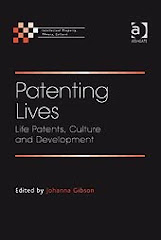
The most striking thing about intellectual property frameworks and cloning is perhaps the way both appear to rely upon the ability to repeat the unrepeatable - the idea (?), the individual (?)
In an opinion piece in the New York Times, Denise Caruso says, "Someone (Other Than You) May Own Your Genes."
Caruso is responding to the recent approval by the US Food and Drug Administration (FDA) of food products derived from cloned animals, meaning that such products need not be labelled as such for consumers.
Caruso points to a survey by the Pew Initiative on Food and Biotechnology (Pew), which contradicts the often cited view that US citizens accept biotechnology in the food industry, and identifies similar concerns with industry and loss of consumer confidence that have been surveyed in Europe.
When it comes to biotechnology, the concerns raised by campaigners and researchers alike frequently refer to the specific character and base material of research in biotechnology, and a fundamental incompatibility with the patent system and its arguably greater suitability for "mechanical" innovation. Caruso quotes a comment from Tim Hubbard of the Human Genome Analysis Group at the Wellcome Trust Sanger Institute, "If you have a patent on a mousetrap, rivals can still make a better mousetrap. This isn't true in the case of genomics. If someone patents a gene, they have a real monopoly."
Under European patent law a patentable invention must be useful (industrial application), and the European Biotechnology Directive requires utility for patent protection to be available for genetic sequences (in other words, a use/purpose must be identified). Classical interpretation of patent protection might indeed mean that the identification of one use might result to protection over all uses - effectively, protection for a naturally-occurring substance. But, developments towards purpose-bound protection in Europe mean that this anomaly would be reconciled within the system. Similarly, in the US, efforts to patent isolated gene sequences in 1994 were defeated for lack of utility.

On the "property" aspects, Caruso considers the work of Stephen Hilgartner (pictured at right), Department of Science and Technology Studies (STS), Cornell University, who published a paper on these issues. "Acceptable Intellectual Property" is articulated upon the notion of "risk" and the conventional concept of "balance" in intellectual property protection, Hilgartner asks whether the protection of biotechnology fulfils that balance.
And indeed, strikingly, he suggests that theories of real property and the attending expectations and obligations might be more applicable for these technologies - that is, a certain reconciliation of the unrepeatable.



No comments:
Post a Comment